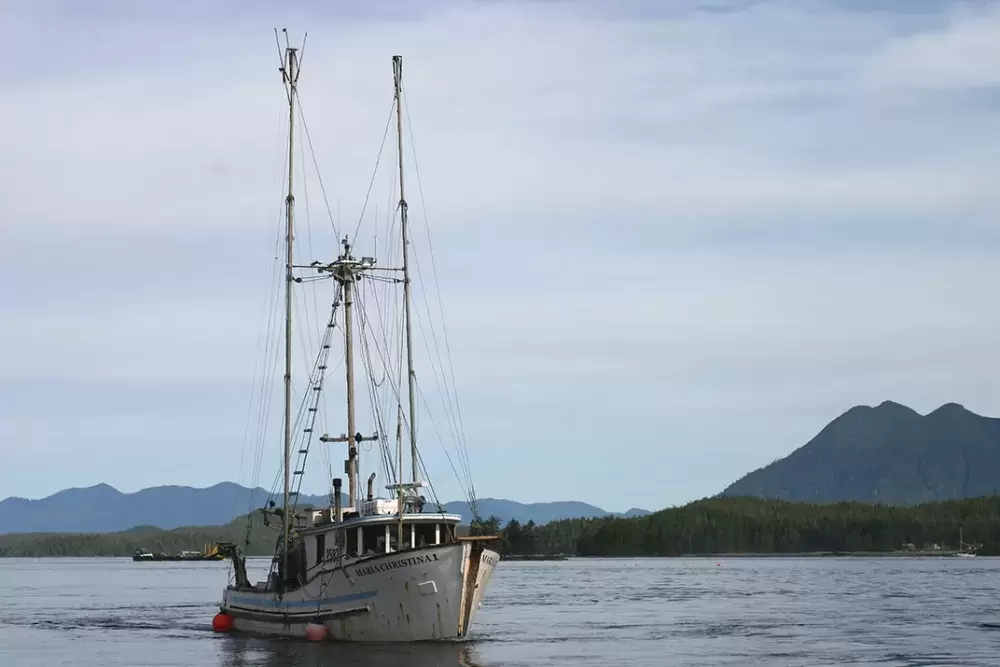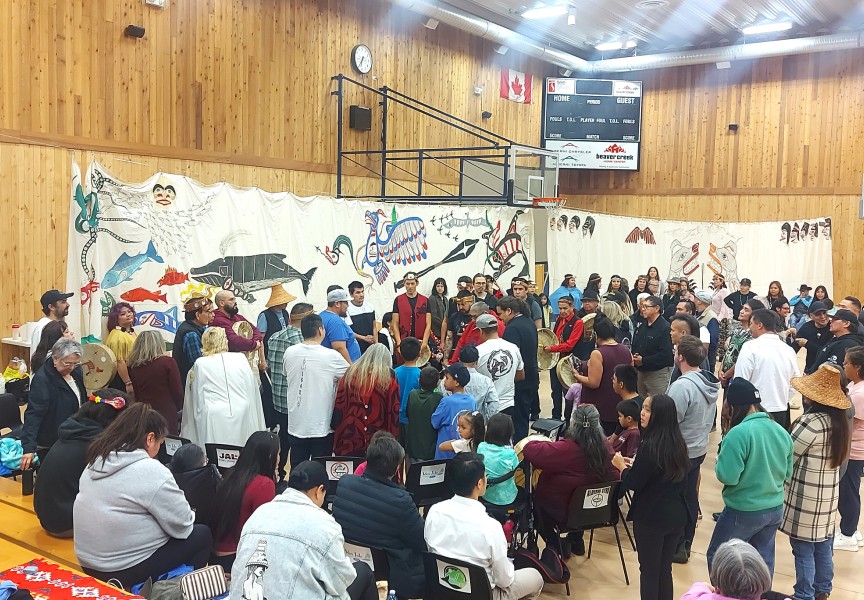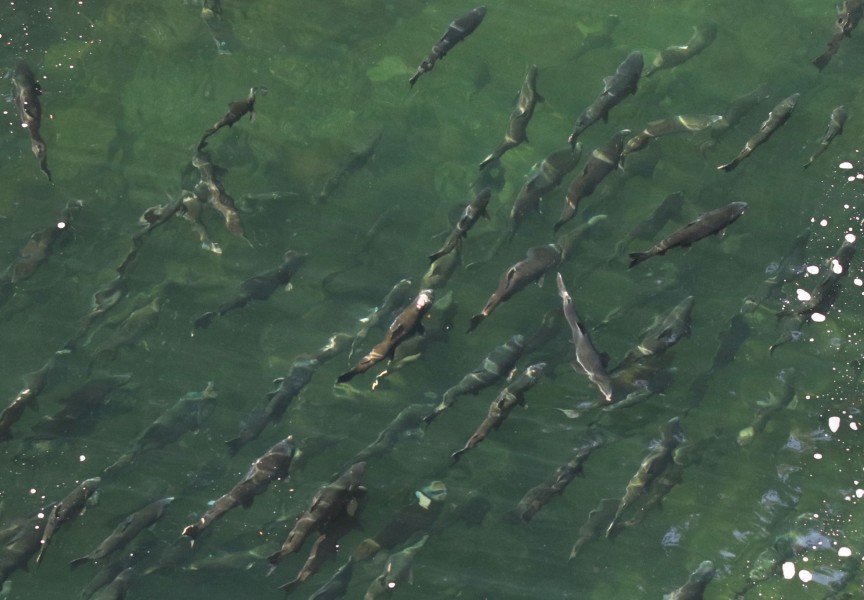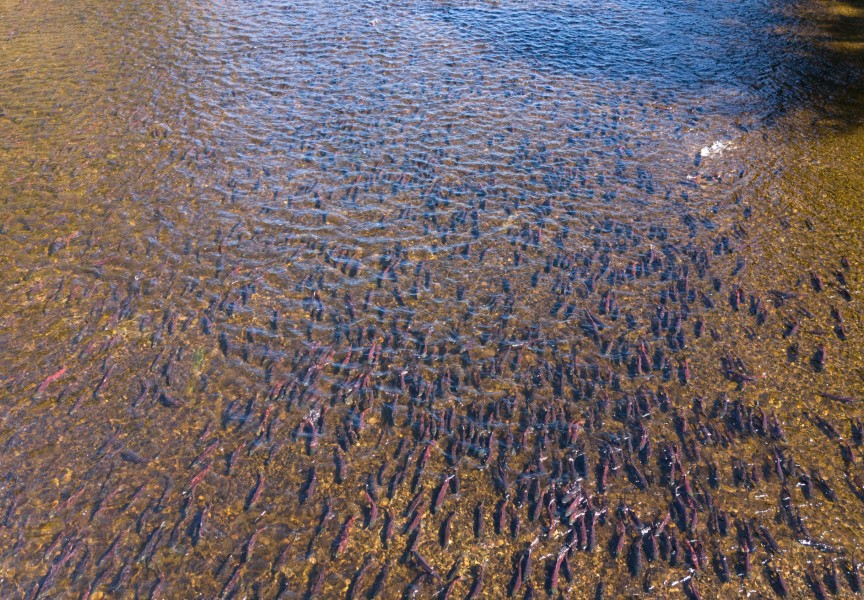With most of the west coast of Vancouver Island’s catch going to the sports fishery, the DFO is reviewing its policy for determining fisheries allocations among different user groups. It’s a process that entails considering the needs of Nuu-chah-nulth nations, say officials from Fisheries and Oceans Canada.
In October representatives from the federal department came to the House of Huu-ay-aht in Anacla for the Council of Ha’wiih Forum on Fisheries, where they heard concerns from Nuu-chah-nulth delegates. Now with Canada’s 20-year-old Salmon Allocation Policy under review, there are opportunities for the needs of Nuu-chah-nulth communities to be considered, said Laura Brown, the DFO’s area director for the south Pacific coast. On Nov. 21 the DFO issued a formal invitation for Nuu-chah-nulth nations to begin this consultation process.
“The department has identified funding this year to continue our work and to consult with First Nations regarding FSC [food, social and ceremonial] access and allocations,” said Brown when addressing comments from the Nuu-chah-nulth delegates. “We have funding so we can meet face to face to talk about that.”
The need was identified to consider changes in the Nuu-chah-nulth population since the Salmon Allocation Policy was last written.
“Our Nuu-chah-nulth populations have grown a lot since 1993 when our community allocations were created,” said Jared Dick, Central Region biologist with Uu-a-thluk. “We feel it’s important for DFO staff to come to our villages to better understand our reliance on our own resources.”
“We have a whole new village site that’s gone up and we have 100 new homes there,” noted Andrew Jackson, fisheries manager for the Tla-o-qui-aht First Nation. “The numbers don’t meet our needs with what you have in the licence and what we actually take.”
“FSC is a right, it’s not negotiable,” stressed Ehattesaht/Chinehkint member Lyle Billy. “That’s our right to feed our families. You cannot take that away.”
“The department recognizes that our FSC allocation and access policy does require serious review and some changes and flexibilities,” responded Brown.
“Population demographics have changed,” she added. “It is one of the factors that have spurred us to look at the salmon policy.”
With consideration to species conservation, the DFO estimates how many fish can be sustainably caught in a particular zone each season. Then this number is divided into allocations among different groups. For the west coast of Vancouver Island this includes commercial, T’aaq-wiihak, recreational, Maa-nulth Treaty fisheries, as well as harvest allotments for First Nations food, social and ceremonial (FSC).
“The first allocation, the first cut, absolutely is conservation,” explained Brown. “After that the allocations are based on priorities, and the first priority is always First Nations FSC.”
As an example from 2018, of the 88,300 in total allowable catch for chinook salmon on Vancouver Island’s west coast, FSC was allocated 5,000. Following the Maa-nulth treaty, the Huu-ay-aht, Toquaht, Uchucklesaht, Yuułuʔiłʔatḥ and Ka:'yu:'k't'h'/Che:k'tles7et'h' First Nations, were allotted 3,447 chinook. Then the recreational fishery got 50,000 chinook, which is based on the DFO’s average allocations from the last three years. T’aaq-wiihak and commercial fisheries followed with 9,721 and 20,132 chinook allocations respectively.
During the fisheries forum Nuchatlaht councillor Archie Little expressed frustration shared by many in Vancouver Island’s west coast communities.
“We open the sports fishery up to the world,” he said. “We’re tired of being beggars in our own rich land. We look forward to the day when benefits will stay in Nuchatlaht.”
In the DFO’s Integrated Fisheries Management Plan for Canada’s Pacific Region, the federal department stresses the economic value of the sports fishery.
“Based on the most recent Survey of Recreational Fishing in Canada (2010), tidal water recreational fishing led to over $689 million dollars in expenditures and major purchases in British Columbia,” stated the document. “Fishing opportunities in B.C.’s tidal waters draw Canadians and international tourists to the province: of 47,269 non-resident anglers surveyed in 2010, 40 per cent reported that they would not have come to British Columbia at all if there had been no opportunities for tidal water angling. A further 19 per cent would have shortened their stay in the province.”
During the forum discussion Cliff Atleo, an Ahousaht fisheries negotiator, asked the DFO representatives if a cabinet decision is still in place from Canada’s previous Conservative government. This limited any allocations for First Nations communities.
“Can the department tell us if the cabinet order protecting salmon coast-wide allocation framework is still in place? Because any review of the policy doesn’t mean anything if that cabinet order still exists,” asked Atleo. “As far as I know, that has not changed.”
Brown responded by saying she will look for an answer.
“I’m not familiar with the cabinet order to which you’re referring, but I’ll have to get back to you,” she said.







